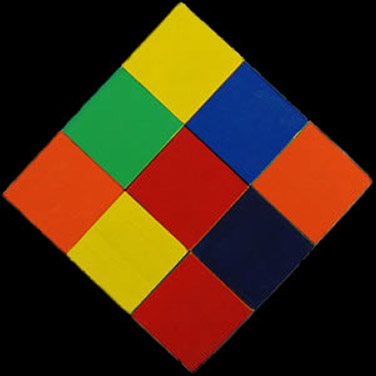MacMahon's Cubes

The thirty MacMahon cubes have six colours in all possible combinations on their sides. They all differ from each other, which means they cannot be converted into each other via rotations. The aim of the game is to select a cube and choose eight more from the remaining twenty-nine to construct a 2x2x2 cube with the same colours on the corresponding sides as the original cube. Touching faces inside the cube must also be the same colour.
History
The puzzle was invented by Percy Alexander MacMahon, an English major and important mathematician in the field of combinatorics. It first appeared in 1921 in his work "New Mathematical Pastimes". In the period that followed, additional versions of the puzzle were proposed, such as the construction of a 2x2x2 cube where two pairs of facing sides are the same colour and the third pair are two other colours; or the construction of larger cubes and cuboids with sides of the same colour.
Mathematics
If the twenty-four rotations that leave a cube invariant are taken into consideration, precisely thirty of the 720 possible six-coloured cubes are different.
The solution to MacMahon’s problem cannot be found through random trial and error. The approach needs to be systematic. Firstly, the four cubes for the bottom layer are sought, then those for the top. In doing so, you see that precisely two solutions exist. Both involve using the same eight cubes; they lie symmetrically to the centre of the cube and are rotated.